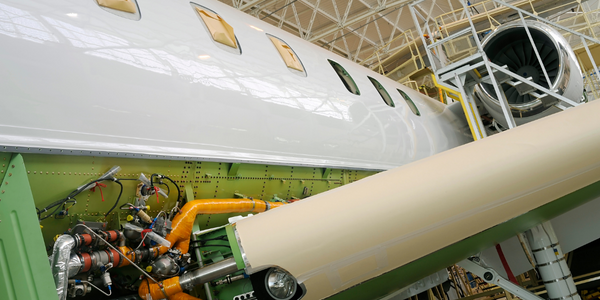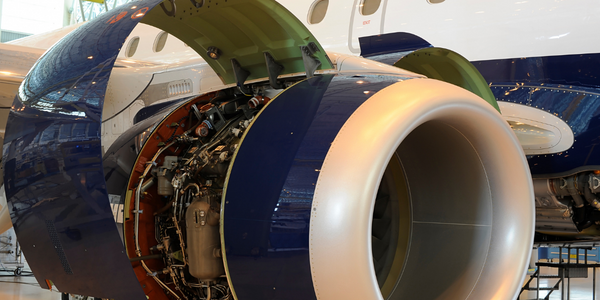Technology Category
- Drones - Fixed-Wing Drones
Applicable Industries
- Aerospace
- Life Sciences
Applicable Functions
- Product Research & Development
About The Customer
Airbus is a global leader in the aerospace industry, known for designing and manufacturing state-of-the-art aircraft. They are committed to reducing the environmental impact of their products and have a strong focus on innovation and technology to achieve this. In this case, Airbus was designing the A380, the world's largest passenger aircraft, and wanted to ensure the design was as lightweight as possible while maintaining all performance standards. They sought the assistance of Altair ProductDesign to help them achieve this goal.
The Challenge
In the aerospace industry, the overall weight of an aircraft is a critical design requirement due to the impact just a few kilograms can have on fuel efficiency and CO2 emissions. Heavier aircraft use more fuel during flight which leads to increased running costs for the airline carriers. Airbus, while designing the world’s largest passenger aircraft, the A380, aimed to ensure the design was as lightweight as possible while maintaining all performance standards. The challenge was to reduce the weight of the aircraft without compromising on the performance standards.
The Solution
Altair ProductDesign was selected to assist in the development of the A380 by helping to define and implement a new optimization process to remove mass from the aircraft’s leading edge droop nose wing ribs. A two-step design process was implemented. Firstly, a set of predefined stress and buckling loads from Airbus were brought into Altair’s own optimization technology, OptiStruct. Based on these loads and the design space available within the wing assembly, OptiStruct’s topology, sizing and shape optimization technologies automatically identified the ideal material layout for the ribs. During the second phase, Altair ProductDesign engineers interpreted these topology results in order to develop a manufacturable structure. Each topology result of the 13 wing ribs was studied and a new, innovative material layout was created.
Operational Impact
Quantitative Benefit

Case Study missing?
Start adding your own!
Register with your work email and create a new case study profile for your business.
Related Case Studies.

Case Study
Airbus Soars with Wearable Technology
Building an Airbus aircraft involves complex manufacturing processes consisting of thousands of moving parts. Speed and accuracy are critical to business and competitive advantage. Improvements in both would have high impact on Airbus’ bottom line. Airbus wanted to help operators reduce the complexity of assembling cabin seats and decrease the time required to complete this task.

Case Study
Aircraft Predictive Maintenance and Workflow Optimization
First, aircraft manufacturer have trouble monitoring the health of aircraft systems with health prognostics and deliver predictive maintenance insights. Second, aircraft manufacturer wants a solution that can provide an in-context advisory and align job assignments to match technician experience and expertise.

Case Study
Aerospace & Defense Case Study Airbus
For the development of its new wide-body aircraft, Airbus needed to ensure quality and consistency across all internal and external stakeholders. Airbus had many challenges including a very aggressive development schedule and the need to ramp up production quickly to satisfy their delivery commitments. The lack of communication extended design time and introduced errors that drove up costs.

Case Study
Developing Smart Tools for the Airbus Factory
Manufacturing and assembly of aircraft, which involves tens of thousands of steps that must be followed by the operators, and a single mistake in the process could cost hundreds of thousands of dollars to fix, makes the room for error very small.

Case Study
Accelerate Production for Spirit AeroSystems
The manufacture and assembly of massive fuselage assemblies and other large structures generates a river of data. In fact, the bill of materials for a single fuselage alone can be millions of rows of data. In-house production processes and testing, as well as other manufacturers and customers created data flows that overwhelmed previous processes and information systems. Spirit’s customer base had grown substantially since their 2005 divestiture from Boeing, resulting in a $41 billion backlog of orders to fill. To address this backlog, meet increased customer demands and minimize additional capital investment, the company needed a way to improve throughput in the existing operational footprint. Spirit had a requirement from customers to increase fuselage production by 30%. To accomplish this goal, Spirit needed real-time information on its value chain and workflow. However, the two terabytes of data being pulled from their SAP ECC was unmanageable and overloaded their business warehouse. It had become time-consuming and difficult to pull aggregate data, disaggregate it for the needed information and then reassemble to create a report. During the 6-8 hours it took to build a report, another work shift (they run three per day) would have already taken place, thus the report content was out-of-date before it was ever delivered. As a result, supervisors often had to rely on manual efforts to provide charts, reports and analysis.




